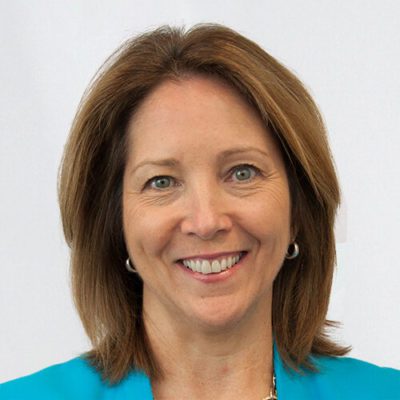The secret to increasing patient engagement
Interview with Barbara Collura, President and CEO of Resolve and Ed Trott, Chief Patient Officer, Ferring Pharmaceuticals
In this two-part interview we talk with Barbara Collura, President and CEO of RESOLVE: The National Infertility Association, and Ed Trott, Chief Patient Officer, Ferring Pharmaceuticals about their upcoming appearance at Reuters Events’ Pharma & Patient USA 2020 (Virtual, Dec 1-4) and the challenges involved with patient engagement during the COVID-19 pandemic.
>
“Our biggest concern is that patients need to connect with each other… In the patient advocacy sphere, we are trying to find ways to preserve that patient connection and community”— Barbara Collura
Part 2
How has the pandemic changed the way you approach patient engagement? Do you foresee further evolution of the interaction with stakeholders and patients, particularly in the context of the COVID-19 pandemic?
Barbara Collura, President and CEO of Resolve: So much of what we have done in the past has been in person. We have, for example, approximately 200 support groups that meet in person every single month. We also have awareness events and fundraisers. When the pandemic hit, that all stopped.
Our organisation is part of the National Health Council, which is an umbrella organisation that allows the U.S. health community to meet, and I interact with a lot of other CEOs of patient advocacy organisations, and our biggest concern is that patients need to connect with each other. The virtual world has been helpful, but eventually we are all going to need to see each other. In the patient advocacy sphere, we are trying to find ways to preserve that patient connection and community, and this includes things such as virtual support groups, delivering patient education, and social media communication. Developing these activities has significantly impacted our day to day operation.
However, there have been some silver linings. When you think of live events and in-person events, people have to travel to those places, and that immediately creates barriers, such as cost or the need to take time off from work. Any of these issues could prevent someone from attending such an event. With the virtual world, these barriers have largely disappeared, so we are seeing more patient engagement and more participation. One of the things that we see in our space is that there are a lot of disparities in how care is delivered and there are communities that just don’t get care. We have seen in this virtual space that care can be more inclusive, for example through telemedicine, and people who weren’t reached before can now access care.

Ed Trott, Chief Patient Officer, Ferring: There’s not much to add except that we can’t replace humans. We are still the best at intimacy, caring and empathy. Somehow, we are going to have to get back to in-person interaction once this is over. Not everything will become virtual, but it will be a major part of what we do going forward.
What works best for you in terms of patient engagement at the moment? What format and channel?
Barbara Collura: Simply saying “we will regroup once this pandemic is over” doesn’t work for patients. They need help now and need to connect with each other now. We have encouraged our support group leaders across the country to connect with their support groups through any means that make sense for them, such as Google hangouts or Facebook live groups. On a national level, we are using Zoom to create national support groups, and it’s really neat because we have a number of volunteer hosts. We get about 100 people on a Zoom call and then they break out into small groups of less than 10 people, each managed by a volunteer host. These Zoom sessions last about an hour and the patients can share and get support. We have surveyed those attendees and found that the sessions have been extremely helpful for them.
At first, everyone thought this was going to be a short-term thing, but now we have realised that this could continue for a while, and so we have had to build a system and a process that’s sustainable.
Ed Trott: What we need to do as an industry is progress our patient interaction beyond some of the things that most people are comfortable with. In terms of patient groups, we do interviews, we collect feedback, and a lot of people have begun discussing the patient journey. However, there are steps beyond that. You have to start to figure out how you are going to use the patient journey to improve the things that you are doing within your company. Discussing these things in siloes isn’t particularly valuable compared with integrating these concepts so that they become strategic capabilities that are leveraged across an entire organisation.
We benefit from the fact that these patient groups have adapted so quickly, and the fact that they have used the pandemic to improve the diversity of patients that we get access to, so we have benefitted from the way that they have evolved.
What do you hope the key take-aways will be for the (virtual) attendees of your talk and discussions.
Barbara Collura: From a patient advocacy perspective, I would have two messages. Patient advocacy organisations should be open to having partners. It is incredibly valuable and helpful and can be transformative for your organisation. For pharma partners, I would say to embrace long-term partnerships with patient advocacy organisations. Work to build trust and strengthen relationships and ensure that you have those partners in place across your different disease states because you will benefit and the patients will benefit and those advocacy organisations will have a trusted partner.
Ed Trott: For me, the take home is understanding the power of a network and understanding that patient advocacy groups are part of your environment and part of your network. It is important to really listen and identify what their needs are, so that you can better support them, and they can better support you.

